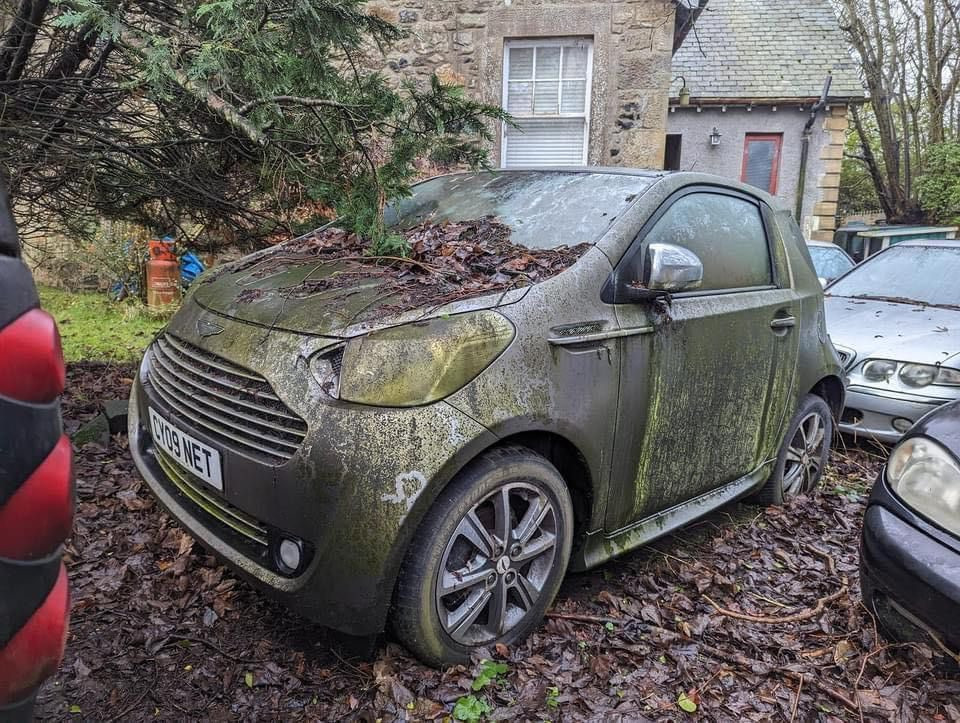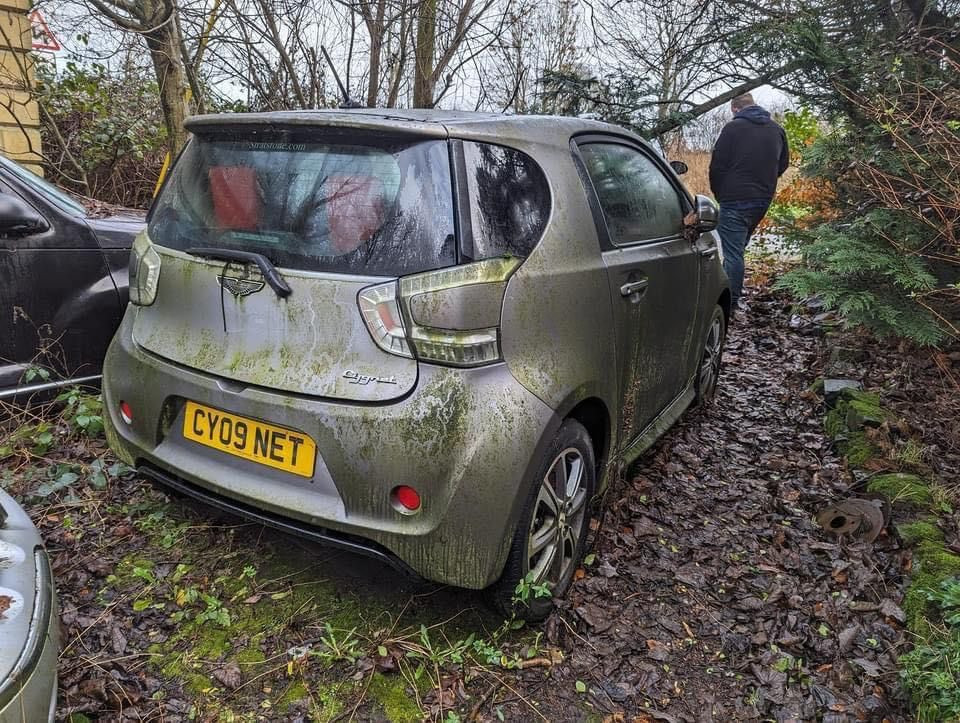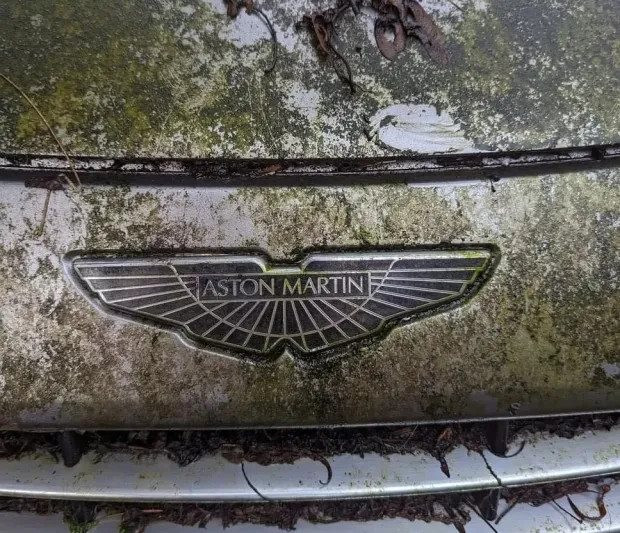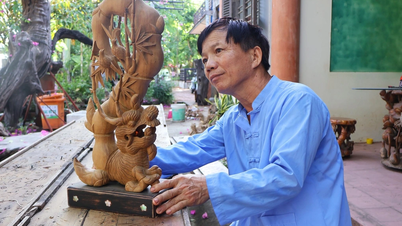
In a video shared on social media, James Dorrell - a man who claims to love old and broken cars - showed off a small collection of abandoned cars, covered in dirt and leaves.
Viewers were quick to spot the “diamond in the coals,” in the form of the Aston Martin Cygnet. The luxury city car was introduced in 2011.
The vehicle is part of an expansion of the company's popular luxury sports car range, reducing average emissions across the entire fleet to comply with new restrictions.

James Dorrell accidentally found an abandoned Aston Martin on the side of the road. Photo: @hjwakerley.
Only 300 were made, and of those, only 141 were registered in the UK, making the Cygnet much rarer than any other Aston Martin luxury car.
The Cygnet maintains Aston Martin's design DNA with its interior and exterior paint scheme, but the rest of the bodywork is inspired by the Toyota iQ city car. It's essentially a small Toyota with an Aston Martin badge.
This isn’t a car for long drives, it’s for short trips and city driving. Aston Martin has tried its best to include some luxury features, but with limited cabin space, there’s not much they can do.
During the 2011-2013 production period, the Cygnet was equipped with a 1.3-litre, four-cylinder, petrol-aspirated engine, mated to a six-speed manual transmission. The vehicle successfully reduced CO2 emissions below acceptable standards.

This is truly one of the rarest models ever produced by the luxury brand. Photo: @hjwakerley.
Performance-wise, there’s not much to say about the car. It can accelerate from 0-62 mph in 11.8 seconds, reaching a top speed of 106 mph. The engine produces 98 horsepower and 92 ft-lb of torque, and it’s mated to an automatic transmission.
After a short two years, the Cygnet was discontinued for a number of reasons. First, it was overpriced. The Cygnet cost about the same as a new Range Rover Evoque at the time, but didn’t offer nearly as much value.
Second, the Cygnet is not built for the customer, but for reducing emissions. It is not built with the driver in mind.
During that time, the car attracted the attention of a small segment of Aston Martin enthusiasts.

Even personalized number plates are "worth a fortune." Photo: @hjwakerley.
A few can still be found on second-hand websites, often fetching around £320,000 – a slight increase on their original retail price when they first hit the market.
Even adjusted for inflation, the Cygnet has only lost around £10,000 in value over the past decade.
Not only that, comments on social networks also quickly pointed out that the license plate on the car is worth a "fortune" to collectors. The license plate has the number "CY09 NET", produced in May 2011, according to the DVLA (UK Driver and Vehicle Licensing Agency).
This suggests that this is one of the first Cygnets ever built. More specifically, given the license plate, it could be a model used by the manufacturer as a display model.

Only 141 Aston Martin Cygnets were registered in the UK. Photo: @hjwakerley.
Some people just see it as a regular small car. Meanwhile, another calls it their “dream London daily driver.” Another says they are 100% sure they will buy it.
The car appears to have been abandoned at some point in 2019. It is registered as a SORN but is not roadworthy and it is unclear who owns it.
SORN (Statute Off Road Notification) is a declaration by the vehicle owner that the vehicle is registered but not in use in order to reduce vehicle tax and insurance.
According to The Sun
Source


![[Photo] More than 124,000 candidates in Hanoi complete procedures for the 2025 High School Graduation Exam](https://vphoto.vietnam.vn/thumb/1200x675/vietnam/resource/IMAGE/2025/6/25/fa62985b10464d6a943b58699098ae3f)

![[Photo] General Secretary To Lam works with the Standing Committee of Quang Binh and Quang Tri Provincial Party Committees](https://vphoto.vietnam.vn/thumb/1200x675/vietnam/resource/IMAGE/2025/6/25/6acdc70e139d44beaef4133fefbe2c7f)


![[Photo] First training session in preparation for the parade to celebrate the 80th anniversary of National Day, September 2nd](https://vphoto.vietnam.vn/thumb/1200x675/vietnam/resource/IMAGE/2025/6/25/ebf0364280904c019e24ade59fb08b18)
































































































Comment (0)